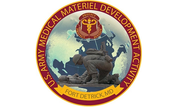 |
|
|
|
|
Quitting tobacco is hard. In fact, it’s common for people to relapse several times before kicking the habit completely. Whether your preference is lighting a cigarette or using a smokeless variety, tobacco can be difficult to part with. (U.S. Air Force photo illustration by Airman 1st Class James L. Miller)
Quitting tobacco is hard. In fact, it’s common for people to relapse several times before kicking the habit completely. Whether your preference is lighting a cigarette or using a smokeless variety, tobacco can be difficult to part with.
As bad habits go, smoking is pretty common: More than 15 percent of Americans use cigarettes.
Quitting can have huge benefits for your health. Those who stop smoking experience lower blood pressure, reduce coughing and phlegm, and decrease their risk of cancer and heart disease.
"After several years of quitting smoking, the risk of cancer and heart disease is lowered as compared to if the individual continued to smoke," said Dr. Briana Todd, a clinical psychologist for the Deployment Health Clinical Center. "There are some health factors that can 'begin to return to normal' like blood pressure and heart rate after quitting smoking."
Smoking is not only unhealthy, it’s expensive. According to a report by the U.S. Surgeon General’s office, tobacco use costs $300 million in medical expenses and $150 million in lost productivity on a national level. Smoking a pack of cigarettes a week can cost about $345 annually and smoking a pack a day can cost $2,423 a year.
“For some who are maybe thinking about quitting it can be helpful to think about what else you can use that money for,” said Todd.
The Path to Quitting
Even if you’re well aware of the benefits that come with quitting, you may still struggle with the idea of not smoking, Todd recommended a multi-step approach to quitting tobacco:
- Consider your motivation for quitting, including the negative effects tobacco use has had on you, how quitting will benefit you, and what obstacles you will face as you try to quit.
- Pick a date and time to quit. Setting a start date can help you get over procrastination about quitting.
- Visit your health care provider. A provider may help you plan out a course for quitting, or prescribe medications to help you quit.
- Decide how you’ll quit. One of the most common approaches is to gradually reduce your tobacco use. You can try lowering the frequency of your smoking or reducing the amount you smoke at one time. You may eventually reach a point where you can stop entirely.
- Identify how tobacco use affects you emotionally. What other methods could you use to manage your emotions? For example, if you smoke to relax, Breathe2Relax is a mobile app that teaches you breathing skills to manage stressful emotions.
- Identify alternatives to smoking. When the urge to smoke arises, replace it with another activity, such as taking a mint, stretching or doing a puzzle.
- Identify places, foods and people that may trigger your desire to smoke, and then distance yourself from those situations.
- Tell people you’ve quit. This can reinforce your efforts by keeping you accountable. Having a network of support and encouragement can help you get through the urges.
- The StayQuit app from the National Center for Telehealth & Technology is a good resource, as is the national quit line: 1-800-QUIT-NOW.
- Online resources such as UCanQuit2 have useful tips and tools for easing out of your tobacco habit.
- Think like a non-smoker. Have activities other than tobacco in mind for when you feel tempted. Re-enforce your commitment to stop smoking with statements such as, “I don’t actually need tobacco.”
- Be prepared for nicotine relapse symptoms. Reactions to a reduction in nicotine may include weight gain, fatigue, frustration and anxiety, among other symptoms. Be prepared to face some unpleasant effects, such as irritability, cravings, having trouble concentrating, after you’ve stopped smoking.
- Review why you quit. Remind yourself how quitting has benefitted you. What successes have you had?
If you do relapse, don’t give up. On average, it takes four to six attempts to successfully quit tobacco. Failing once doesn’t mean you won’t succeed next time.
“It takes multiple times for most individuals to be successful in quitting tobacco. That is normal and that is OK,” Todd said.
|
|
|
U.S. Army Medical Materiel Development Activity Logo
 (Graphic courtesy of Erin Bolling, USAMMDA public affairs) (Graphic courtesy of Erin Bolling, USAMMDA public affairs)
Each year, in observance of Military Appreciation Month throughout May, millions of citizens across the country have the opportunity to honor our Service Members, veterans and their families for all they have done, and continue to do, in support of our nation. In light of this, it seems rather appropriate that we use this occasion to recognize the tremendous work being conducted by the U.S. Army Medical Materiel Development Activity in support of our Warfighters worldwide. The U.S. Army Medical Command, also known as Army Medicine, has built an illustrious legacy since its establishment in 1775, and throughout the centuries it has remained the cornerstone of advanced development and production of cutting-edge medical treatment for both military and civilian personnel.
As a subordinate command of the U.S. Army Medical Research and Materiel Command, Fort Detrick, Maryland, USAMMDA continues to fulfill its primary mission to develop and deliver quality medical capabilities to protect, treat and sustain the health of Service Members. The output provided by USAMMDA's five project management offices and three divisions would make any organization proud. However, given the fact that this work is conducted by our military for our military may perhaps add a bit more cogency to the effort.
While it is indeed timely, this philosophy of Army Medicine began centuries ago on the shores of a new country.
From the very beginning of our nation's history of independence and its wartime efforts, it was clear to our military leaders that protecting and preserving our Warfighters remained paramount to victory in battle. During the American Revolution, the smallpox virus was wreaking havoc throughout the land, and Soldiers on both sides of the field were falling victim to this vicious disease. Approximately 90 percent of deaths among Continental Soldiers during the Revolutionary War have been attributed to smallpox, which is quite surprising given the hostile milieu at that time.
Recognizing the need to fortify American troops for battle, George Washington ordered the inoculation of Soldiers at Valley Forge during the winter of 1777. The mass vaccination was very successful, not only for those who received the vaccine but also for those who did not, as the spread of smallpox among the Soldiers was reduced dramatically.
In effect, the work of Army Medicine had helped to win the war, and saved countless lives in the process.
Colonel William E. Geesey, USAMMDA commander, takes great pride in the role his organization plays in Army Medicine, and he realizes the far-reaching aspect of these efforts.
"If you consider the value that we bring to protecting our Warfighters, specifically with drugs, vaccines, blood products, and medical devices – our work actually dates back to the birth of our nation," said Geesey. "But the medical products we create for our Warfighters often go beyond our military efforts and end up benefitting the citizens of our nation and others throughout the world."
Since its establishment in 1985, USAMMDA has grown from approximately 50 military and civilian personnel to more than 210 today, including government contractors. The work of the organization directly informs the advanced development of medical products for both the Army and U.S. Joint Forces, and USAMMDA remains the premier developer of world-class military medical capabilities.
Over the years, USAMMDA's accomplishments have been plentiful, which has led to numerous lives being saved both on and off the battlefield.
Pharmaceutical efforts targeted at assisting our Warfighters include the development of drugs to battle leishmaniasis and malaria, vaccines to thwart viral infections including Adenovirus and Dengue, and human-replacement blood products such as cryopreserved platelets and freeze-dried plasma that offer more time for evacuation to a treatment facility, which helps to maximize survival of battlefield casualties.
Should our military members sustain catastrophic injuries in battle, USAMMDA strives to help in this area as well by developing and delivering solutions to make wounded Warfighters whole by restoring form, function and appearance. Efforts on this front include severe burn treatment and skin repair, restoration of hearing loss, and hand and face transplantation, which involves state-of-the-art procedures that go far beyond the model of traditional medicine.
While we hope that our Servicemen and -women return from the fight unscathed, many may arrive home with unseen injuries such as neurotrauma, including traumatic brain injury, and psychological health concerns, including post-traumatic stress disorder. To assist with treatment in these areas, USAMMDA has teams dedicated to research and development of both drug-based and other therapies that support the Service Member's recovery and return-to-duty, if possible. The bottom line is that no military member is left behind after returning from battle.
Additional teams manage activities for USAMMDA's PMOs and divisions that involve regulatory affairs and clinical studies requiring U.S. Food and Drug Administration approval, and the organization also includes staff that research and develop products critical to the safety and welfare of military members worldwide. Some of the items being developed by the USAMMDA team include reinforced shelter walls for combat support hospitals, a system to test and monitor the safety of drinking water in the field, products to upgrade medical evacuation vehicles, modernized litter units and accessories, and insecticide-impregnated bed nets to protect Warfighters against disease-carrying flies and insects – to name only a few.
Each and every day, USAMMDA remains dedicated to taking a critical concept and turning it into a life-saving resource for our Service Members throughout the world. The organization's men and women stand together to accomplish the mission of protecting and preserving our nation's Warfighters, as all understand the importance of ensuring that our military forces remain at full strength and capacity. The knowledge that countless Servicemen and -women depend on the work of the USAMMDA team is what drives the command to ensure mission success – and the extreme passion of the team only adds fuel to get the job done.
Kathleen Berst, Deputy Commander for Acquisition, serves as both a leader and a champion for the mission of USAMMDA, and few are more enthusiastic than she when it comes to the care of our troops.
"USAMMDA's entire mission is to support our military, and we are dedicated to developing products to prevent our Service Members from getting sick, and technologies to save their lives and restore form and function if they are injured in service to our country," said Berst. "Every day is military appreciation day at USAMMDA because our mission requires that the health of our Service Members be our first priority!"
Protecting, preserving, treating, and helping to sustain Warfighters across the globe – what better way is there to show a deep appreciation of our military members?
Fortunately, this display of gratitude takes place regularly at USAMMDA, regardless of the month.
|
|
|
|
|
|
|
|
|
|








No comments:
Post a Comment